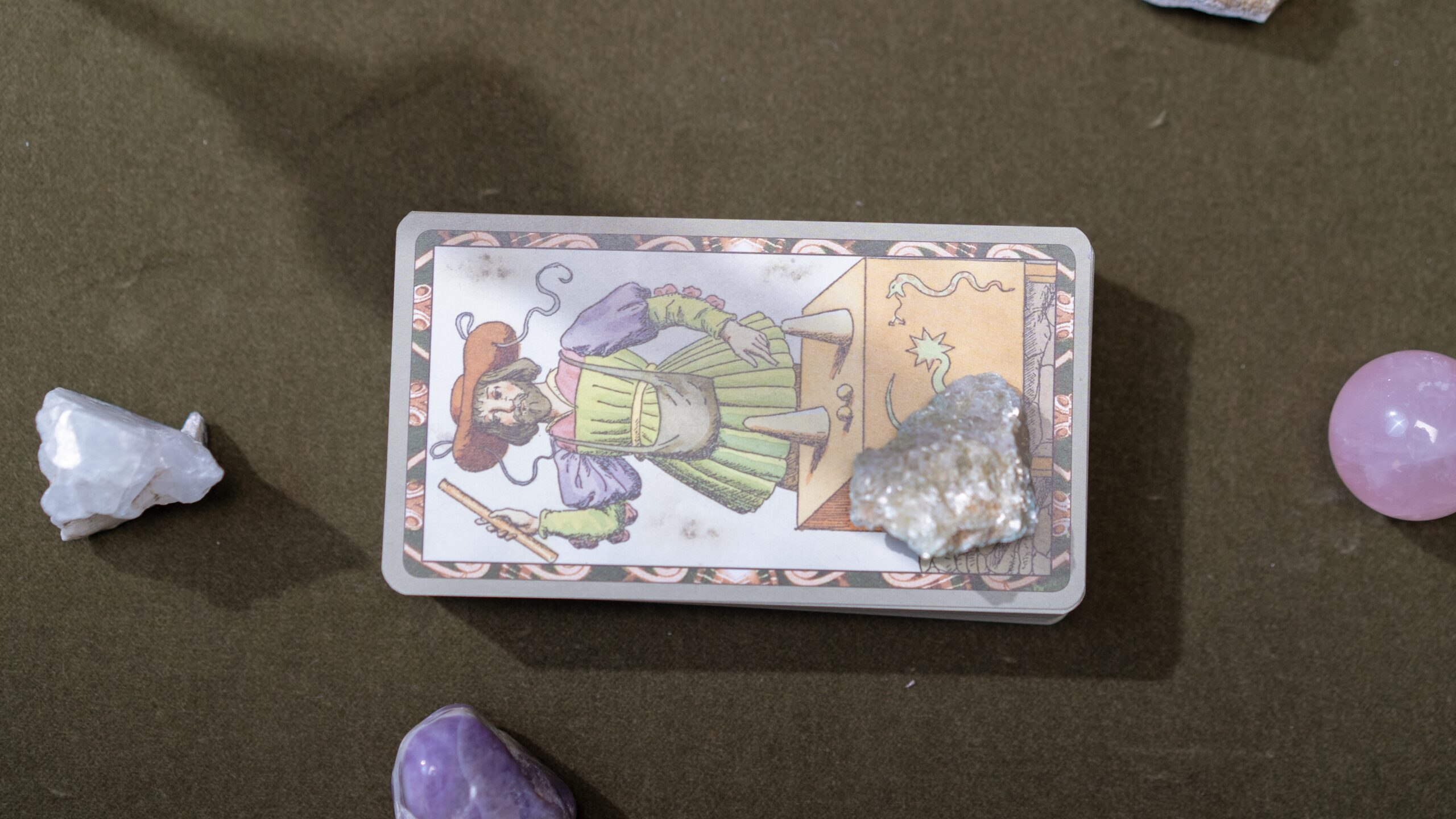What Is a Daily Tarot Card?
If you’re new to tarot or you want to make it a more central part of your life, then you should consider pulling a daily tarot card.
A daily tarot card is a simple and easy way to learn and use tarot because you focus on a single message. This helps you train your intuition. Once you make this a habit, you’ll be using more complicated tarot spreads with multiple cards in no time.
So how do you start this practice?
Tools for Daily Tarot Card Pulls
All you need is a tarot deck, physical or digital, and a place where you can concentrate. I use the traditional deck called the Rider-Waite, but any tarot deck will do, including oracle cards.
While you’re welcome to use pick a cards, I’d recommend against this if you want to do a daily tarot card to develop your psychic ability. This also includes tarot apps that give you immediate, unhidden descriptions with your card.
The reason for this is that you need “wait time” to trigger your intuitive ability. This not only forces you to think about or research the traditional meaning, but it also pushes you to look and examine the card before you make an interpretation.
Every reading and every day is different. Certain symbols or impressions will come through some days that won’t on others.
Interpreting Your Daily Tarot Card
You’ll be tempted to take the meaning of the card at face value. This is excellent when you’re learning the standard description, but recall alone does not make a psychic with a strong intuition.
Tarot cards and many oracle cards have layers of meaning. The illustrator of the famous Rider-Waite deck, Pamela Colman Smith, was a master of occult imagery which influenced every tarot deck since.
The Four of Swords, for example, features a peaceful golden tomb and has a traditional meaning of “rest.” But perhaps you’re unusually drawn to the three swords hanging above the golden tomb, and you realize that you’re waiting around and not aware of dangers coming your way.
On another day, you might be drawn to the stained-glass window in the background and realize you need to rest with spiritual self-care. See how the meaning can change?
A daily tarot card pull causes you to focus on the details of a single card, helping you to build a more intimate relationship so you can fully understand the symbolism inherent to its meaning.
Your Daily Tarot Card Reading Ritual
There are many ways to perform daily card readings, but I won’t list them all here. Instead, I’m going to focus on the foundational practice most readers seem to use.
1. Prepare your space
Find a quiet place where you won’t be disturbed. You should be physically comfortable and have a place to lay down your card.
If you’re easily distracted, consider listening to ambient music to help get you into the mood for the reading and to block out any noises.
2. Ask your question
Meditate for a moment so you can clear your mind and be receptive to psychic energy. Even three to five deep and focused breaths are good.
Then, allow your mind to wander. If you have a lot to do that day, it can be helpful to have your planner or to-do list nearby. You may also want your journal if you keep one.
This will help you to craft a tailored question to your life, though more general questions like, “What should I know today?” are fine. More specific questions like, “How can I ace my presentation” could also be appropriate depending on the day.
3. Shuffle your cards
Once you have your question in mind, shuffle your cards using your preferred method. The easiest type is to place your cards on a table and fan them out in front of you, moving cards randomly on top of each other.
However, the more common methods for veteran tarot readers are the riffle shuffle and the overhand shuffle. The riffle shuffle is the most accurate and randomized method to shuffle, but it can damage your cards over time as you physically bend the cards.
Because of this, most tarot readers have moved over to the overhand shuffle. This is also the only way to shuffle mini or oversized cards effectively, like oracle cards. Some readers will do their shuffles erratically so the cards will “jump out” on their own and use those cards for their reading.
If you have short fingers like me, you may find the overhand shuffle physically challenging. It may take some time for some of you to find the type of shuffle which works best, so don’t be afraid to experiment. Luckily, your daily tarot card pull is an excellent opportunity.
4. Interpret your card
Once you have picked your card, it’s time to make your interpretation. If you’re new to tarot, you may find it helpful to write down notes or keep a journal. Always consider the following questions:
- What symbols stick out to me?
- How do they make me feel?
- What is the traditional meaning of the card?
You may want to create a list and reflect in your notes or your journal. The more you do this, the more automatic the meanings will be to you. Slowly, you’ll be able to make more tailored interpretations for the particular reading and rely less on stock descriptions in books or online.
5. Review at the end of the day
After you’re reading, put your cards away. Some tarot readers will place their daily tarot card on their altar or in someplace where they can physically see it. This helps trigger their awareness of the card so they can see its meaning actively at work in their lives.
Part of using tarot or any divination method is understanding how to apply it. There’s no point to tarot (except entertainment) if you aren’t going to try and see how that fortune reveals itself to you.
But if you’re too busy to look at your card or you’d prefer a more structured approach, review your tarot card at the end of the day. Many tarot readers will keep a journal and reflect upon the card’s message and how it manifested.
This can be an important learning tool for tarot, but also a valuable time for self-care too.
Final Thoughts
Pulling a daily tarot card is the perfect way for new or veteran readers to improve their skills and intuition. It allows you to focus on a single message and apply it immediately into your life.
Make sure that you have the appropriate tools – a physical or digital tarot deck that doesn’t give you immediate answers – so you’re forced to ponder the symbols you see and tailor your readings for your daily situation.
But more than anything, be patient and compassionate with yourself. It takes time to learn and develop a relationship with all the cards in your deck, so enjoy the process by seeing it as a personal esoteric journey.






